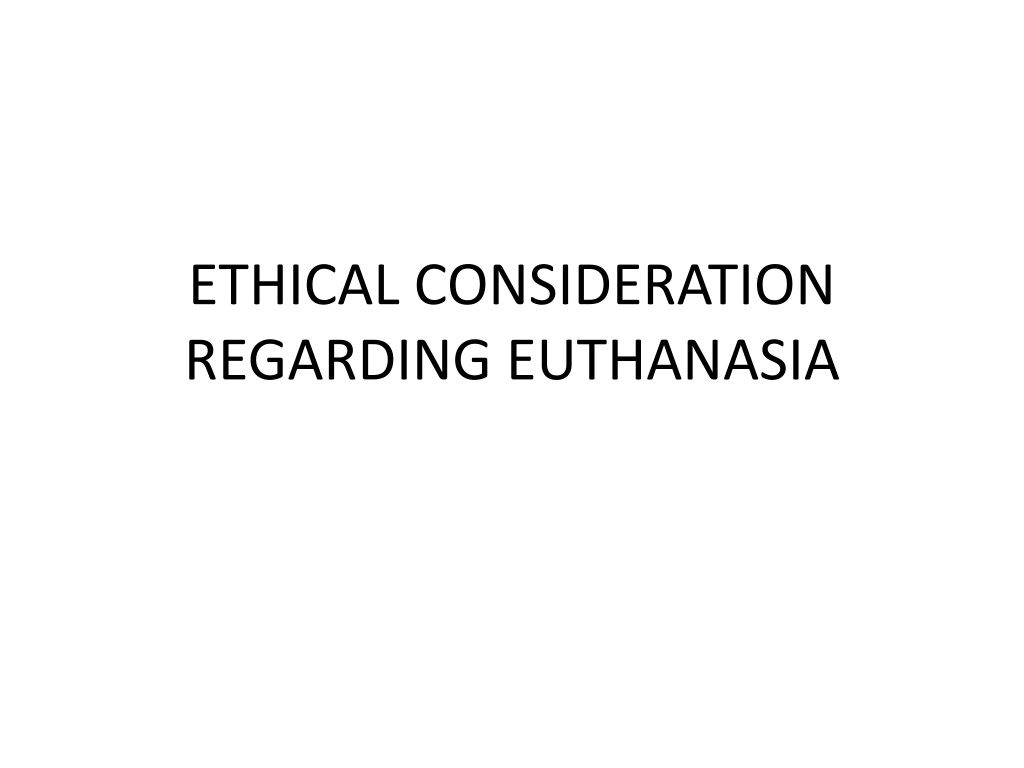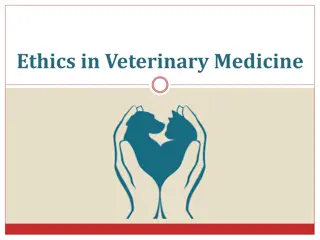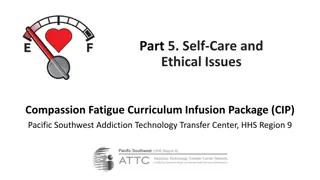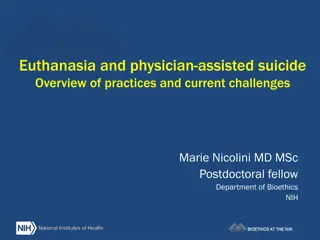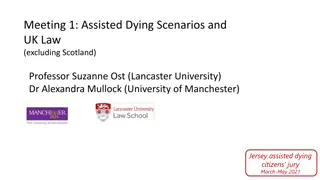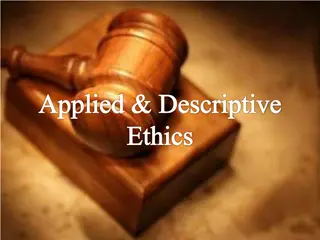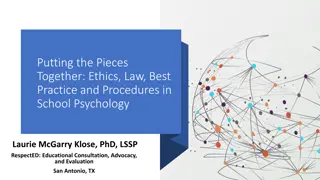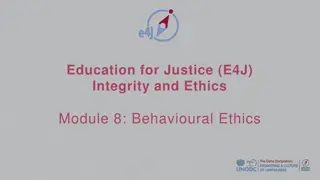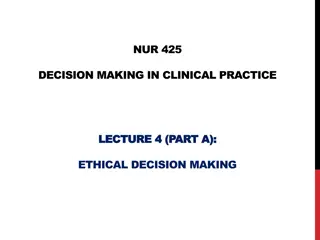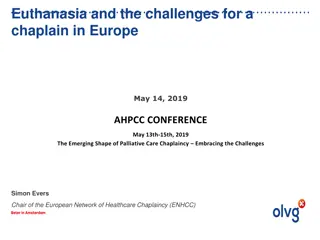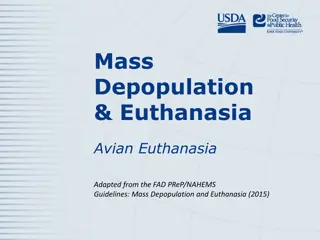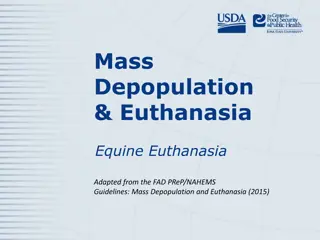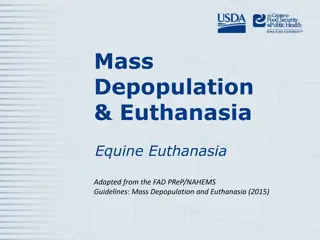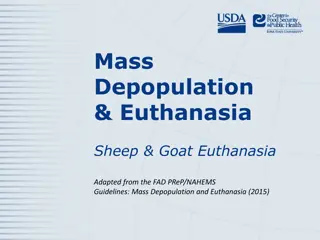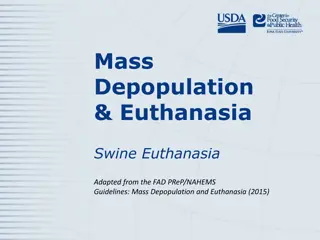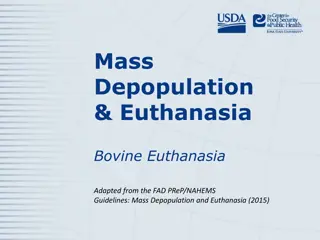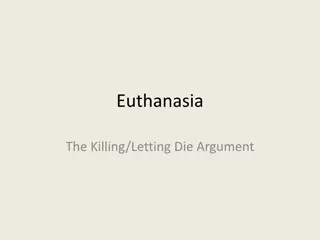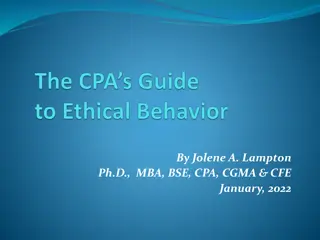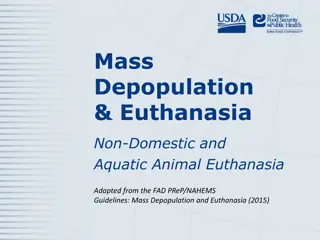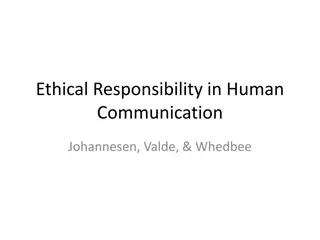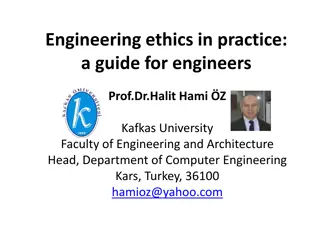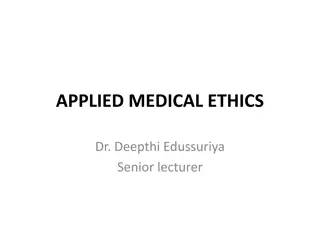The Ethical Considerations of Euthanasia
Euthanasia, derived from Greek meaning "good death," is a complex ethical issue involving the intentional ending of a patient's life to alleviate suffering in terminal conditions. It differs from suicide, as euthanasia may be voluntary, non-voluntary, or involuntary. Considerations about the nature of a "good death" raise questions about the circumstances and control surrounding the act. The decision to perform euthanasia must be aimed at ending the patient's suffering with compassionate intentions.
Download Presentation

Please find below an Image/Link to download the presentation.
The content on the website is provided AS IS for your information and personal use only. It may not be sold, licensed, or shared on other websites without obtaining consent from the author. Download presentation by click this link. If you encounter any issues during the download, it is possible that the publisher has removed the file from their server.
E N D
Presentation Transcript
ETHICAL CONSIDERATION REGARDING EUTHANASIA
WHAT IS EUTHANASIA The killing. The term was first used in medical context by Francis Bacon in the 17th century. His usage was employed to mean easy, painless, happy death during which the physician responsibility to alleviate the physical suffering of the body. term euthanasia means mercy has the
Etymology The term euthanasia originates from a Greek root and it literally means good death. However, there are questions begging for answers when euthanasia is seen as good death
According to Barbara Mac Kinnon While the term itself implies that there can be a good death, in itself it does not tell us when or under what conditions death is good. Is a good death one that comes suddenly or after some time to think about and prepare for it? Is it one that takes place at home and in familiar surroundings or one that occurs in a medical facility? Is it one that we know is coming and over which we have control or one that comes upon us without notice?
Euthanasia is aimed at ending the life of a patient that is suffering from terminal disease Euthanasia is expected to be painless Euthanasia is meant to be induced. It must be intended and not just an accident. It does not arises as a result of the principle of double effect. Euthanasia is expected to be given only when the patient is terminally ill. He may be suffering from painful diseases or be in irreversible coma. The motive for bringing about death must be a good one aimed at ending the pain or suffering of the patient. In other words, it must be in the interest of the person at the receiving end.
Distinction between suicide and euthanasia Suicide is the killing of oneself by oneself or self-killing while euthanasia is mercy killing of oneself by another either through request from the patient (voluntary euthanasia), or when it is done when the patient is not mentally competent to make an informed request (non-voluntary euthanasia) or when done to someone who though competent to make an informed request but has not done so (involuntary euthanasia).
Suicide is the killing of oneself. Euthanasia comes from two Greek words meaning good death. According to Glanville Williams, Suicide differs from euthanasia in that the later is either an assisted suicide or a killing by another for humanitarian reasons and by merciful means, generally with the consent of the person killed . While to T. L. Beauchamp, Euthanasia is the active termination of the life of a terminally ill patient by a second party. From this second definition of euthanasia it is obvious that a second party is involved which differs from the situation in suicide in which the person kills himself. Also, obvious in this definition is that in euthanasia the person asks to be killed due to terminal illness, which necessarily need not be the case in suicide. Suicide may be due to depression or some other reasons, which may not be that the person is terminally ill. This is not to say, however, that a terminally ill person could not commit suicide. What is being said is that it needs not be the sole reason.
Another distinction between suicide and euthanasia is that, in euthanasia pain is to be reduced as much as possible in bringing about the death of the patient, but in suicide painful means such as shooting oneself may be employed.
Consent and the types of euthanasia What euthanasia is consent of the patient. In one, the patient consents, in the second, the patient is not able to consent. In the third, although the patient is able to consent yet the medical practitioner euthanasia. distinguished the three types of goes ahead with
Based on whether the patient consents three forms of euthanasia have been distinguished. These are 1. Voluntary euthanasia 2. Non-voluntary euthanasia 3. involuntary euthanasia
Voluntary euthanasia This is an euthanasia in which the patient is able to give consent and gives consent It is that type of euthanasia in which the person whose life is at stake knowingly and freely decides what should happen. Part of the guidelines from the Dutch parliament include: the person requesting to be put to death must be competent at the time of the request, and the request must be consistent and repeated. The person s suffering must be intolerable, and euthanasia must be performed only by a physician.
Non-voluntary euthanasia In this situation the patient is unable to give consent. The inability of the patient to consent may be legal as in child euthanasia, in which case the patient is underaged, or because the patient is in coma or permanent vegetative state. It may also arise if the individual is only minimally competent- senility or certain psychiatric disorder. Non-voluntary is to be seen as meaning not through the will of the individual. It does not mean against their will.
Before a decision is made in favour of euthanasia one may need to consider advanced directive, writing expression of one s will (living will),
Involuntary euthanasia This is a form of euthanasia in which even though a person is able to give consent, yet his consent is not taken into consideration before euthanasia is carried out.
Passive and active euthanasia Passive Euthanasia is allowing death Active euthanasia is causing death.
Passive Euthanasia is allowing death Passive euthanasia involves allowing a person to die as a result of not providing him with certain life-prolonging treatment e.g. turning off a respirator.
Active euthanasia is causing death There are those who limit the meaning of euthanasia to active euthanasia only. Active euthanasia involves a case in which the medical practitioner brings about death through his/her action. Active euthanasia is the intentional giving of a drug with the purpose of bringing about a person s death, This may be done through admission of lethal drugs or death-causing devises
Reason for Requesting for Euthanasia 1. Worries about the impact of one disease on others 2. the difficulty of the disease on the individual afflicted with the disease
Some moral issues to consider regarding Euthanasia The first is the Divine Command Theory. The divine command theory holds that an action is right or wrong based on what God says. Although one may not direct have a command from God prohibiting killing yet one can deduce a few things from religious doctrines about whether it is right or wrong to commit euthanasia.
The injunction thou shall not kill prohibits exterminating humans. Thus, from this injunction it can be deduced that it is wrong to kill. However, someone making objection to this interpretation of the command thou shall not kill may argue that that induction does not cover all forms of killing. There are instances in the Bible for instance where Yahweh permitted the killing of certain set of people. The heathen for instance and there is even the claim that thou shall not suffer the witch to live.
Perhaps passive euthanasia which allows one to not give any intervention may be more justifiable. This is because it may not be justifiable to sustain a life beyond the point in which the life can be lived and not necessary to extend the suffering of a life when that life has expressly requested the end of its misery. It is important to bear in mind regarding this that in earlier times medicine was incapable of extending life beyond its endurance, and society did not have the resources to invest in such behaviour. One can only claim that nature has taken its natural course.
Quality vs Quantity The quality of life that an individual has may be used to evaluate whether euthanasia is right or wrong. People go through pain and suffering and medical treatment may not suffice to alleviate the pain or suffering apart from physical pain, there is even mental torture arising from loss of independence. The quality of life is affected by difficulty of swallowing food, paralysis, and inability to recognise loved ones. Psychological factors like depression, and becoming dependent may also be unbearable And since quality of life supersedes quantity then one may say euthanasia is justified
It is important to note however, that one cannot euthanise someone that has not expressed the desire to die even when such people are terminally ill. The consequence of euthanasia should also matter in determining whether one should go ahead with euthanasia or not. This is because one should weigh the consequence of one s action on the family of the patient and loved ones. If it will lead to greater devastation then it will be justified but if it will lead
